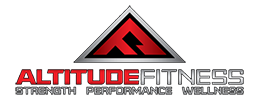Techniques and Procedures
The treatment techniques that we select are tailored to the needs of each individual patient. We select the treatments that we offer based upon the most recent scientific investigations and literature.
Spinal Manipulation
The chiropractic adjustment is also referred to as a spinal “manipulation”. During this procedure, the doctor applies his / her hands to the area of the spine to be treated in such a way as to mobilize the joints. Most commonly, the doctor will administer a quick, short, hands-on movement to the joint. The joint often elicits a “pop” or “crack,” similar to when “cracking” one’s knuckles. Patients often sense movement of the joint.
The goal of the chiropractic spinal manipulation is to:
Increase the joint mobility / range of motion
Relieve pain
Reduce muscle spasm
Restore optimal joint function
Joint mobilization
Mobilization is a form of stretching that is applied to stiff joints in order to optimize and restore range of motion, relieve pain, and reduce muscle tension. These procedures consist of small passive movements, usually applied as a series of gentle stretches in a smooth, rhythmic fashion to the individual’s joints. Mobilizations may be administered in various gradations or degrees of pressure, depending upon the sensitivity and stiffness of an individual’s joints.
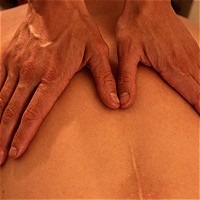
Soft Tissue Therapies
Trigger Point Therapy
During this procedure, deep manual pressure is applied to, and held on, sensitive pressure points within muscles. This procedure usually reproduces discomfort in the area of a patient’s complaint, as well as under the point of pressure. Trigger point therapy is used to relieve painful trigger points and their characteristic referred symptoms.
Active Release Techniques®
ART is a patented, state of the art soft tissue system/movement based massage technique that treats problems with muscles, tendons, ligaments, fascia and nerves. Headaches, back pain, carpal tunnel syndrome, shin splints, shoulder pain, sciatica, plantar fasciitis, knee problems, and tennis elbow are just a few of the many conditions that can be resolved quickly and permanently with ART. These conditions all have one important thing in common: they are often a result of overused muscles.
What is an ART treatment like? Every ART session is actually a combination of examination and treatment. The ART provider uses his or her hands to evaluate the texture, tightness and movement of muscles, fascia, tendons, ligaments and nerves. Abnormal tissues are treated by combining precisely directed tension with very specific patient movements. These treatment protocols – over 500 specific moves – are unique to ART. They allow providers to identify and correct the specific problems that are affecting each individual patient. ART is not a cookie-cutter approach.
Please visit the following link for more ART info: http://www.activerelease.com
Myofacial Release
Soft tissue is defined as muscles, ligaments, fascia, tendons and nerves. These tissues are the structures that hold your skeletal system intact and allow it to move and function. When these structures become injured or inflamed due to direct trauma, repetitive stress, overuse, and nutritional deficiencies, they become scarred and sticky. These structures stick to surrounding structures which prevents full movement, causes pain, weakens the muscles and leads to chronic problems. The analogy is muscle should be like a rubber band and soft tissue injury causes them to become more like a rope. We feel that that these structures MUST be evaluated and treated.
Transverse Friction Massage (TFM)
Scar tissue forms when inflammation is present after an injury. The presence of scar tissue often leads to a significant loss of function. Transverse friction massage (TFM) involves deep pressure with specifically directed movement in order to remodel scar tissue, allowing the soft tissue to become more flexible, pliable, and more functional.

Instrument Assisted Soft Tissue Therapy
This technique is used to effectively break down areas of dense scar tissue and fascial adhesions associated with chronic injuries as well as promote faster tissue healing following recent injuries. The resonance from the instruments can actually improve the ability of the practitioner to feel the tissue through the tool, which can aid in the detection of soft tissue pathology. The specific design of the various tools enable the practitioner to work effectively on small joints, or large areas, and to vary the depth to allow for both superficial and deep tissue therapy.
Functional Movement Screening
FMR is a customized series of tests, specific to each individual’s sport or activity demands, that will accurately assess functional mobility, balance, strength, and endurance. Dysfunction or imbalance in any of these areas can lead to tissue overload and the development of cumulative trauma or compensation injuries as the body attempts to adapt. By comparing the results of your movement screen with your current symptoms, we can determine the underlying cause of your pain/injury and design a specific rehabilitation plan. In cases where there is no pain or injury, functional movement screens can still be useful. The screens can identify potential risk for future injury as well as revealing problems that may be limiting your performance. Through early identification a corrective exercise plan can be implemented to correct the issue before it causes more problems.
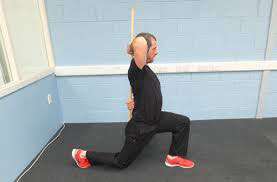
Corrective Exercise
Correcting the underlying cause of the injury or functional restriction, as well as learning how to care for your injury at home, is essential to achieving a successful long-term outcome. Based on your current injury, and the results of your movement screen, the board certified doctors will provide instruction on proper biomechanics to avoid irritating the affected tissues as well as prescribe therapeutic exercises to restore normal function to the injured soft-tissues and joints. The initial focus of the corrective program is on improving movement quality by restoring soft tissue tone, increasing joint mobility, promoting balance and core stability, and activating inhibited or weak muscles. Self-myofascial release utilizing a foam roll and/or trigger point ball can release dense and fibrotic adaptations that occur in muscles, tendons, and fascial tissue from acute injury or cumulative trauma. Gentle stretching and mobilization exercises will restore proper muscle length and flexibility. Neuromuscular re-activation exercises are used to regain concious control over muscles that have become inhibited due to pain or dissuse. Simple floor exercises are then implemented to engrain the muscle activation patterns while increasing strength, endurance, and core stability. As you improve, the program will progress to include more complex movements tailored to the demands of your work, sport, and everyday activities. The end goal of the rehab program is to achieve a state in which your functional capacity exceeds the demands that you place on your body in order to avoid re-injury.
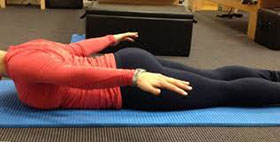
Sports Rehab
For the individuals who demand more out of their body from elite athletes to workout junkies we offer the final step in the rehab to performance model. During athletic events the body is required to stabilize one area while producing power with an adjacent tissue. We must also efficiently transfer force from side-to-side and from lower-to-upper body at high speeds, often on unstable surfaces or under unexpected loads. It is well known that the body will show specific adaptations to imposed demands (ie. training for a marathon will have little impact on how far you can hit a golf ball). Therefore, if you only train your body to transfer force or stabilize at low speeds, or balance in one plane and on stable surfaces, you may increase your risk of injury and fail to meet your potential. Based on the specific demands of your sport or activity, we will implement a program utilizing dynamic, multi-joint exercises that simultaneously promote increased performance and injury prevention. The program will integrate unstable surfaces, upper and lower body plyometric exercises, variable resistance, and agility training sport-specific movement patterns to ensure that you return to your pre-injury ability and maximize your athletic potential.
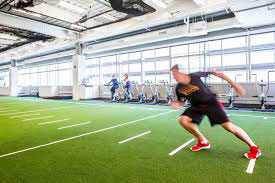
Kinesio Taping® and Kinesio® Tex Tape
The Kinesio Taping® Method is applied over muscles to reduce pain and inflammation, relax overused or tired muscles, and support muscles in movement on a 24-hour-a-day basis. The taping is non-restrictive and allows for full range of motion. In contrast, more traditional sports tape is wrapped around a joint strictly for stabilization and support during an athletic event. Kinesio® Tex Tape is used to treat anything from headaches to foot problems and everything in between. A few examples include rehabilitation from sports injuries, carpal tunnel syndrome, lower back strain/pain (subluxation, herniated disc), and knee and shoulder conditions, though there are many more uses available.
The Kinesio Taping® Method is a definitive rehabilitative taping technique that is designed to facilitate the body’s natural healing process while providing support and stability to muscles and joints without restricting the body’s range of motion. Additionally, it provides extended soft tissue manipulation to prolong the benefits of manual therapy administered within the clinical setting.
Latex-free, and wearable for days at a time, Kinesio® Tex Tape is safe for populations ranging from pediatric to geriatric, and successfully treats a variety of orthopedic, neuromuscular, neurological and other medical conditions. The Kinesio® Taping Method is a therapeutic taping technique not only offering your patient the support they are looking for, but also rehabilitating the affected condition as well. By targeting different receptors within the somatosensory system, Kinesio® Tex Tape alleviates pain and facilitates lymphatic drainage by microscopically lifting the skin. This lifting affect forms convolutions in the skin thus increasing interstitial space and allowing for a decrease in inflammation of the affected areas.


McKenzie Technique©
The McKenzie© Method was developed in the 1960’s by Robin McKenzie, a New Zealand physical therapist. During the course of his practice, he discovered that extending the spine (backward bending) could provide significant relief from low back and lower extremity pain for certain patients. This represented a significant shift in thinking for spine care practitioners, as much of the focus of spine care previously was on flexing (forward bending) the spine.
With the McKenzie approach, a step-by-step examination identifies the movements and postures that best relieve a spine pain sufferer’s complaints. The focus of the examination is on identifying which movements and postures “centralize” the patient’s pain. That is, which positions and activities reduce any extremity (or “perhiperal”) symptoms. The theory of the approach is that centralizing the pain allows the source of the pain to be treated rather than the symptoms.
A central tenent and goal of the McKenzie Method is to teach neck pain and/or back pain sufferers how to treat themselves, and manage their own pain for life, using exercise and other strategies.
Flexion-Distraction
Flexion/distraction manipulation is used to decompress the spinal joints by applying a gentle stretch, or traction, to the lower spine. It is usually applied in a series of repetitive slow movements without dynamic thrusts. The procedure is often used for people with disc problems, lumbar stenosis and facet syndrome, and may also be used in other ways, such as to gently mobilize joints.

Stretches and Exercises
Our patients learn to perform home stretches and exercises to improve their overall fitness and health. Condition-specific exercises and stretches are customized to each patient’s physical needs. Descriptive handouts are provided to facilitate ease of implementation.
Proprioceptive Neuromuscular Facilitation (PNF)
PNF stretching is an advanced form of flexibility training and is considered to be the fastest and most effective way to increase static flexibility. Overall, PNF flexibility training reduces post workout soreness, decreases musculoskeletal injury, increases range of motion, and improves muscular strength and coordination.
Therapeutic Modalities
Short courses of some therapy modalities may facilitate pain relief and muscle relaxation. We provide the following therapy modalities very conservatively, in order to facilitate exercise-based treatments.
Electrical Muscle Stimulation
Often referred to as “muscle stim,” the therapy involves low levels of electrical impulses delivered to the injured, painful tissues to reduce pain and speed healing. Often described by patients as a pleasant “tingling” sensation, or “electrical massage,” these impulses stimulate the body to release natural pain relievers, called endorphins. These endorphins reduce pain and inflammation, thereby promoting faster healing of the injured tissues. This therapy is often used to treat acute or chronic pain, as well as strains or sprains of the muscles, joints, and soft tissues of the spine and extremities.
Theraputic Ultrasound
Therapeutic Ultrasound is a deep heating modality that emits high-frequency acoustic vibration that is above the human audible spectrum. Therapeutic ultrasound reaches underlying tissues as deep as 1 to 5 centimeters.
When electrical energy is applied to a crystal, it causes it to vibrate at a high frequency and to produce ultrasound. Ultrasound is delivered by continuous or pulsed wave and provides a high heating intensity. Therapeutic ultrasound stimulates the repair of damaged tissues, relieves pain, increases blood flow, relaxes muscle spasms, and may speed the healing process.
Interferential Therapy
Interferential current therapy involves administering alternating electrical currents through electrodes placed on the skin at a painful area, or the spinal nerve root associated with a painful region. It is theorized that the low frequency of the interferential current affects the nervous system in such a way as to result in muscle relaxation, suppression of pain and acceleration of healing.
Moist Heat
Moist heat is used to heat the muscles and increase blood flow and cellular activity. It is often used prior to treatment to help relax the large muscle groups in the back. Often times, it is used simultaneously with muscle stimulation.
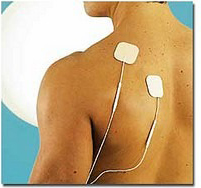

Sign up for our Newsletter
Get the latest news and information from us when you sign up for our newsletter.







